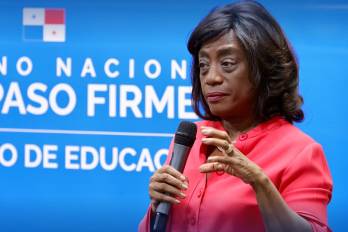En medio de la discusión del segundo debate, el cardenal José Luis Lacunza hizo un llamado a la conciencia social y a la solidaridad frente a las desigualdades...
- 31/08/2009 02:00
PANAMA. An international environmental organization says that the controversial gold mine in Cerro Petaquilla is economically viable and sustainable but that the project should be closed unless measures are put in place to make sure that benefits reach the people most affected and the State.
“There is no fairness in the way the profits are distributed,” said Eduardo Cedeno, economist and environmental management specialist with The Nature Conservancy (TNC).
He said that the 2 per cent commission paid by the company to the state is too low.
He also said that fund to cover clean up costs once the mine closes needs to be significantly increased from 1.4 per cent of the amount invested in the mine to 10-13 per cent.
He warned that otherwise the State could be left footing the bill to mitigate the environmental damage to trees and water resources in impacted areas.
Co-author Mayte Gonzalez said that environmental groups were “not crazy” in asking the government for a moratorium on mining activities in Panama until guarantees can be given that the projects are environmentally sustainable.
She underlined the need for mining projects to include mitigation measures and mentioned the damage caused by the Santa Rosa mining project for which nobody ever assumed responsibility.
The TNC report entitled “Economic and Distributitive Analysis of the Impacts of Mining Activities in Panama” was based on the mining company’s environmental impact assessment.
Cedeno said that the forested areas of Cerro Petaquilla were evaluated for their potential value as carbon sinks on the international market. He said a conservative estimate of the financial costs of potential damage to the forests was $6.2 million.
With regard to water resources, a five km stretch of the Molejon River was evaluated although Cedeno did not specify its financial value. After considering a cost-flow of investments in the mining project TMC concluded that it was economically viable and sustainable, although if the profits are not fairly distributed then it should be shelved.
Gonzalez explained that the analysis was similar to the studies carried out for the Cerro Punta-Boquete highway that was to cross through Volcan Baru National Park, and the construction of the hydroelectric project in the Changuinola River by the AES Panama company. The highway project was shelved because it was economically unviable, whereas the second project went ahead after the company agreed to put in place recommendations to minimize potential damage to forested areas.
Mining, mainly for minerals used in the construction industry, account for 1.4 per cent of Panama’s gross domestic product.

















